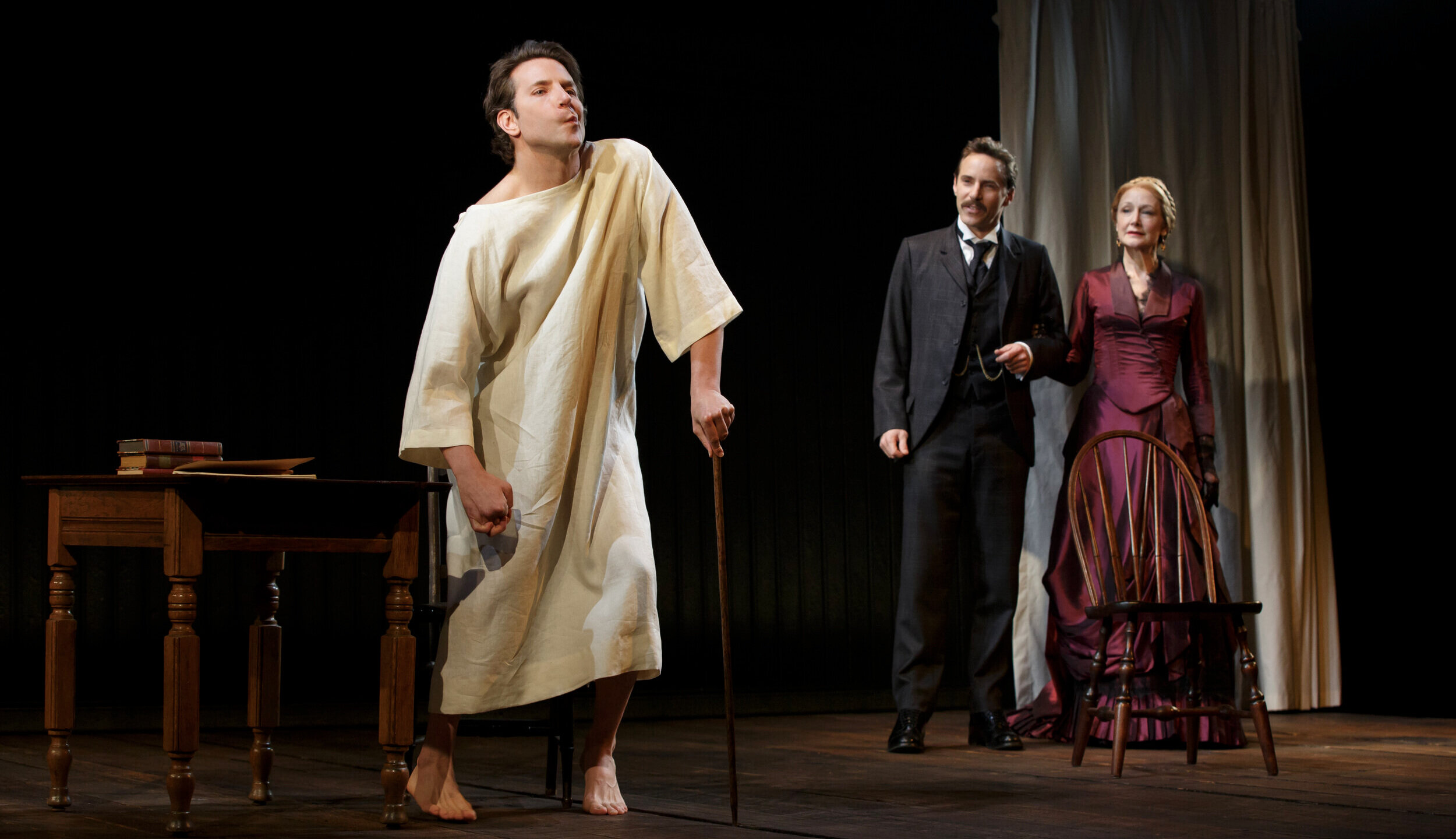
“No one with any history of back trouble should attempt the part of Merrick… Anyone playing the part of Merrick should be advised to consult a physician.”
This disclaimer is listed in Bernard Pomerance’s script for The Elephant Man, just before the first scene of the play. The Elephant Man is based on the life of John Merrick, who lived in London during the latter part of the nineteenth century. A victim of rare skin and bone diseases, he became the star freak attraction in traveling side shows. However, under the care of celebrated young physician Frederick Treves, Merrick is introduced to London society and slowly evolves from an object of pity to an urbane and witty favorite of the aristocracy and literati, only to be denied his ultimate dream, to become a man like any other.
Pomerance’s play originally opened on Broadway in 1979, and has worked its way into the theatrical canon. This is due to its compelling true story, and the fact that it provides a magnificent vehicle for an actor with the depth and the daring to take on the physically and emotionally challenging role of John Merrick. Originally the role was portrayed by Philip Anglim, and Merrick has traditionally been depicted by actors with smaller builds. Once the slight Anglim departed the role, actors such as David Bowie and Mark Hamill took over. In the 2002 Broadway revival, Billy Crudup played Merrick, and John Hurt starred in the 1980 film adaptation.
Now Bradley Cooper, with a considerably more hulking physique, must contort and transform himself eight times a week to play this historic figure who escaped from the shadows of Victorian Freak Shows and climbed to the heights of London society. This is no simple feat. In Merrick’s first entrance, the character of Doctor Treves describes the physical deformities to the audience and the stage directions indicate “Merrick contorts himself to approximate projected slides of the real Merrick.” What begins as a simple twisting of the fingers develops into a hunched back, bent and limping legs, and a crooked mouth that must remain firmly in place until the curtain falls two hours later. In interviews, Cooper admits that when the curtain goes down, he goes on the physical therapy table immediately.
While Cooper brings a hefty amount of star wattage to the production, his presence on the stage is not due to splashy stunt casting. Cooper’s journey with The Elephant Man goes back to his childhood. It was the David Lynch film that inspired him to be an actor at the age of 12, and he first played the role at the Actors Studio Drama School, where he got his MFA. After much success in Hollywood and two Oscar nominations, Cooper revisited the role at Williamstown Theatre Festival in the summer of 2012, prior to its Broadway arrival.
However, it is much more than the transformative physicalizing of Merrick that makes Cooper’s portrayal a defining moment in his career. The subtlety and softness with which he imbues the character vastly differ from the roles that have earned him fame on the screen. It is as if Cooper steps off the stage and Merrick steps on.
Plays like The Elephant Man get revived not only because of the quality of the writing and the story, but also because audiences long to see favored actors put their stamp on an iconic role. While Cooper’s interpretation is reason enough to purchase a ticket, Scott Ellis’s production is so rich in its elements that this is a not-to-be-missed revival. From the expert cast to the perfect period costumes, to the atmospheric lighting, to the simple staging, this Elephant Man is a mammoth experience in the theatre.
…
Photo: Bradley Cooper, Alessandro Nivola and Patricia Clarkson. Credit: Joan Marcus.

Newly Available for Licensing – October 2025 (US)

Newly Available for Licensing – October 2025 (UK)

